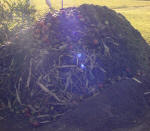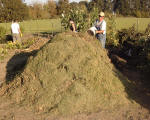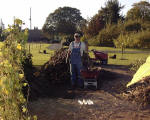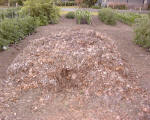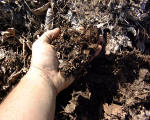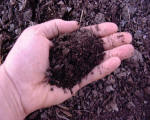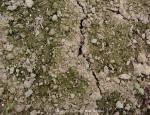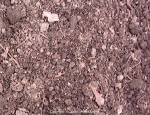|
|
Welcome to Dunton
Family Farms
|
|
Annual Fall Garden Clean Up / Compost Building [ In Place Composting ] [ Mulching ] |
||||
|
As part of our annual fall routine, we prepare the gardens for winter by first cleaning up all the plant material generated during the growing season. This is all used to create compost piles that is then used to improve the soil and feed future crops. This compliments the composting that we do year round in bins. We start by digging and setting aside about twelve inches of top soil. The pile is then built in layers using various plant materials. Starting with wet (green) matter, dry (leaves) are added followed by a thin layer of soil or compost. The pile is built in this manner by alternating layers until it reaches the desired height. The pile in this example was composed mainly of tomato plants and their rotting fruit. Some corn stalks and chicken manure were also added. The plants and stalks were cut into three to six inch pieces using hedge clippers or machete to speed the composting process. Finally, we cover our piles with lawn and field clippings. This finishing touch makes the piles look pretty, helps to shed water, and keeps everything in place. Since this task is done in the fall, I just buzz around the hay field of a bagging mower and collect as much material as is needed. (See picture 3) The resulting compost is usually ready to use in six to eighteen months depending on conditions, ingredients, and whether the pile is manually turned and aerated on a regular basis. Note: Most seeds are destroyed in the composting process but you should avoid weeds with seed heads. Additionally, you should not use diseased plants, woody material, animal matter, or pet feces. The following pictures illustrate what compost can do to improve poor soil:
In Situ Composting (Our Lasagna Method) The previous set of pictures dealt with disposal of all of the plant material generated during a garden season. We additionally compost in situ, that is, directly onto our soil using a large scale, miniaturized version of our compost piles. After our gardens are cleaned up in the fall and the piles built as outlined above, the soil is tilled on last time and the beds reformed. This aerates the bed, stirs up any remaining plant material, and reforming the beds keep the soil well drained during our long, wet winter and spring. We then tuck the beds in by covering then with layers of leaves and lawn clippings - like building a pan of lasagna. We use our mower with bagger to collect all of the leaves from our trees. Two inch layers of shredded leaves are then alternately layered with lawn clippings until the mulch reaches a depth of three to four inches. Since we require more leaves than our trees produce, we work with a couple of local landscapers. They bring us the leaves in the fall with the benefit to them of not having to pay for disposal. For us, we get a lot of good soil building material. The added bonus is it keeps valuable yard debris out of landfills. These efforts at putting our gardens to bed in the fall result in many benefits:
Interesting Links:
|

